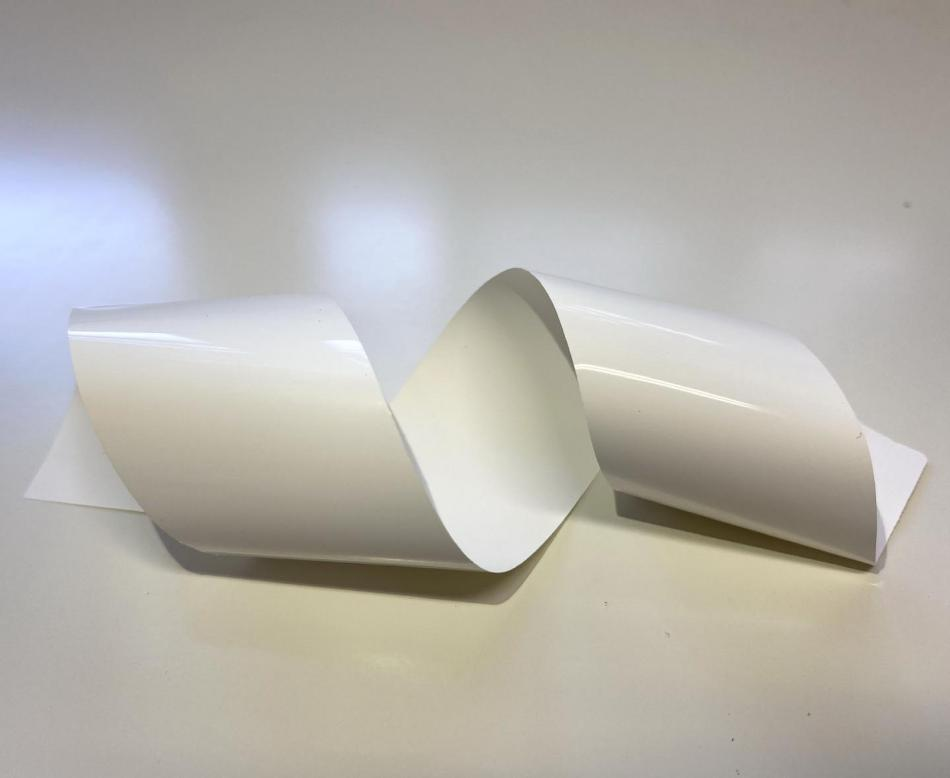Apr 13 2020
A novel technique has been developed by scientists from Tokyo Metropolitan University to create ceramic-based flexible electrolyte sheets for lithium metal batteries.
 The team says that the mechanical robustness and operability of the flexible composite sheet at a wide range of temperatures makes it a promising electrolyte for Li-metal batteries. Image Credit: Tokyo Metropolitan University
The team says that the mechanical robustness and operability of the flexible composite sheet at a wide range of temperatures makes it a promising electrolyte for Li-metal batteries. Image Credit: Tokyo Metropolitan University
By integrating a polymer binder, an ionic liquid, and a garnet-type ceramic, the scientists successfully created a quasi-solid-state sheet electrolyte. The ceramic-based flexible electrolyte was synthesized at room temperature, and this process needs considerably less energy when compared to that of the current prevalent high-temperature (>1000 °C) processes.
The electrolyte works across an extensive range of temperatures, giving it the potential for use in batteries, for example, in electric vehicles.
Most of the global energy requirements are accounted for by fossil fuels, including the electricity used by people. However, fossil fuels are getting depleted and burning them results in the direct emission of carbon dioxide gas and other pollutants, such as toxic nitrogen oxides, into the air. Hence, there is a universal demand to switch to cleaner renewable energy sources.
However, important sources of renewable energy such as solar and wind power are often periodic—that is, the Sun does not shine at night and the wind does not always blow. Thus, sophisticated energy storage systems are needed to utilize intermittent, renewable sources more effectively.
Modern society has been significantly impacted by lithium-ion batteries, which power an extensive range of portable appliances and electronics such as cordless vacuum cleaners ever since they were commercialized in 1991 by Sony. However, to use these batteries in electric vehicles (EVs), both safety and capacity of the latest Li-ion technology need to be considerably improved.
This situation eventually led to a revival of research interest in lithium metal batteries: compared to the graphite anodes that are commercially being used today, lithium metal anodes have a relatively higher theoretical capacity. Technological obstacles related to lithium metal anodes continue to persist.
For instance, in the case of liquid-based batteries, lithium dendrites (or arms) can potentially short-circuit the battery and even result in explosions and fires.
Here, solid-state inorganic electrolytes can provide a suitable solution: they are considerably safer, and Li7La3Zr2O12—a garnet-type (a kind of structure) ceramic often called LLZO—is now extensively considered a potential solid-state electrolyte material, thanks to its high ionic compatibility and conductivity due to the Li metal.
But extreme sintering temperatures, as high as 1200 °C, are required to produce high-density LLZO electrolytes. This process is both time-consuming and energy inefficient, making commercial production of LLZO electrolytes rather complicated.
Additionally, the weak physical contact between the electrode materials and fragile LLZO electrolytes often leads to high interfacial resistance, considerably restricting their application in all-solid-state Li-metal batteries.
Therefore, a research group, under the guidance of Professor Kiyoshi Kanamura at Tokyo Metropolitan University, embarked to develop a flexible composite LLZO sheet electrolyte, which can be created at room temperature.
An LLZO ceramic slurry was subsequently cast onto a thin polymer substrate, similar to spreading butter on toast. After the 75-μm thick sheet electrolyte was dried in a vacuum oven, it was immersed in an ionic liquid (IL) to enhance its ionic conductivity.
ILs are salts that become liquid at room temperature. They are known to be highly conductive while being nearly non-volatile and non-flammable. The IL, when applied within the sheets, effectively filled the tiny gaps in the structure and bridged the LLZO particles, creating an efficient track for Li-ions.
The ILs also successfully decreased the interfacial resistance at the cathode. Upon further analysis, the researchers discovered that Li-ions diffused via both the LLZO particles and the IL in the structure, emphasizing the role played by both.
The synthesis is easy and appropriate for industrial production—the entire process was performed at room temperature without any requirement for high-temperature sintering.
According to the researchers, despite these persistent difficulties, the operability and mechanical robustness of the flexible composite sheet at a broad range of temperatures make it a potential electrolyte for Li-metal batteries.
The ease of this latest synthesis technique may imply that people will witness high-capacity lithium metal batteries on the market sooner than they think.
The study was financially supported by the Advanced Low Carbon Technology Research and Development Program of Specially Promoted Research for Innovative Next-Generation Batteries (ALCA-SPRING) (Grant No. JPMJAL1301) from the Japan Science and Technology Agency (JST).